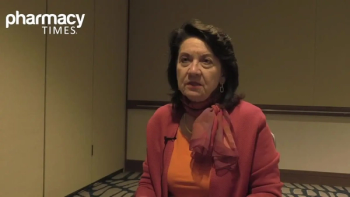
Inpatient Versus Outpatient Treatment in AML
Description of the traditional inpatient administrations versus outpatient treatment processes in acute myeloid leukemia.
Katie Culos, PharmD, BCOP: Amanda, what are the current AML [acute myeloid leukemia] treatment options that you administer? Are they inpatient or outpatient, or just outpatient?
Amanda Brahim, PharmD, BCOP, BCPS, BCACP: Our traditional 7+3 chemotherapy that we do with high-dose daunorubicin at our institution is completely inpatient. Any patient who is a candidate for this treatment, if they’re qualified to get FLT3 inhibitors, we’ll add midostaurin on day 8. This patient is completely inpatient.
The candidate we do a split with is our CPX-351 [daunorubicin, cytarabine] patients. This depends on what Yehuda mentioned earlier with patients being fitter versus frailer. We go through an individual analysis of each of these patients, to see whether we would treat on an inpatient or outpatient basis. We use our inpatient/outpatient unit, which we refer to as IPOP. This is a set of rooms that are physically housed on the inpatient side but are used for outpatient treatment. We generally have used that area for patients immediately post transplant, post-hospital discharge for a transplant, but we also use it in the setting of intensive chemotherapy if that patient is eligible for an outpatient treatment.
Some of the newer oral agents, venetoclax, and the IDH inhibitors are given on an outpatient basis. We have at times admitted for venetoclax dose escalation, on a patient-by-patient basis for those who are at high risk for tumor lysis syndrome.
Yehuda Deutsch, MD: There are times where we may be giving a low-intensity therapy to an unfit patient, but they might be newly diagnosed, and they are diagnosed in the hospital and not well enough to leave. The first cycle of hypomethylating agent and venetoclax we give in the hospital, but subsequent cycles would be outpatient therapy.
Newsletter
Stay informed on drug updates, treatment guidelines, and pharmacy practice trends—subscribe to Pharmacy Times for weekly clinical insights.

















































































































































































































